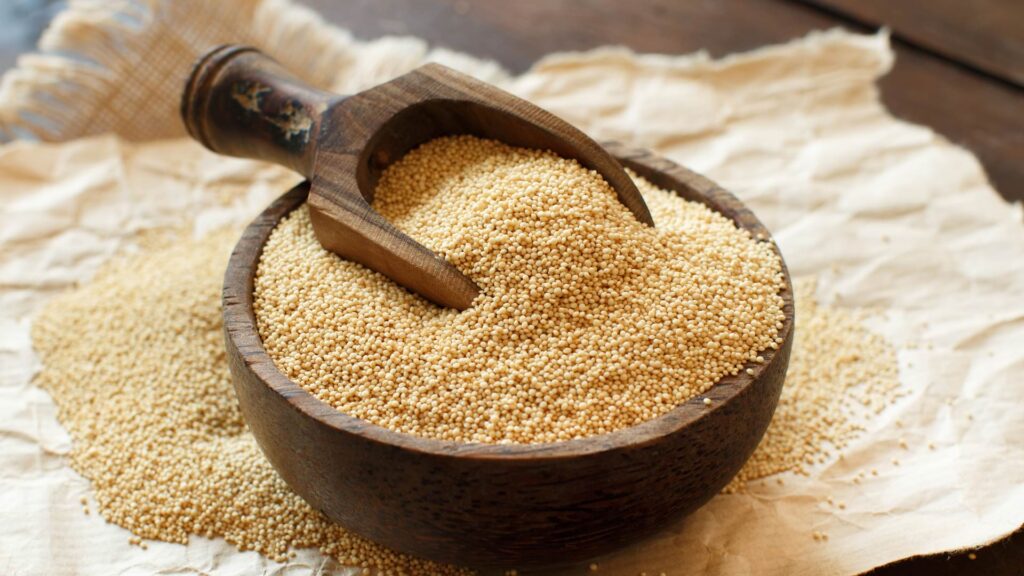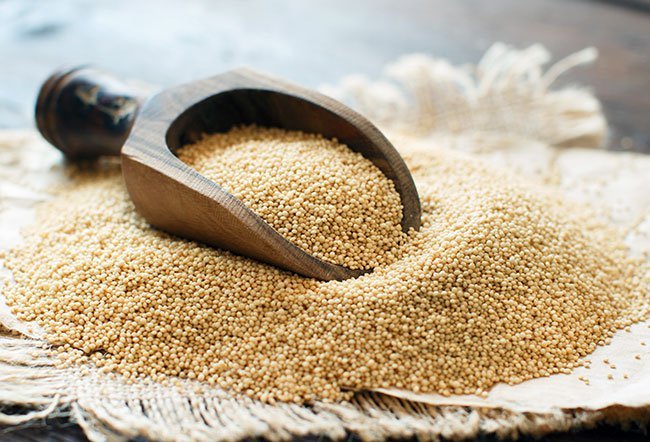In the ever-growing world of superfoods, amaranth stands out as a tiny grain with mighty nutritional power. Once a staple in the diets of the ancient Aztecs, amaranth has made a comeback as a gluten-free, protein-rich grain that offers a wide range of health benefits. But what exactly is amaranth, and how can you incorporate it into your diet?
Let’s explore what makes this ancient grain so special.
🌾 What Is Amaranth?
Amaranth is a pseudo-cereal — a seed that behaves like a grain when cooked — and comes from the Amaranthus plant, which has been cultivated for thousands of years. Unlike true grains such as wheat or rice, amaranth is gluten-free and packed with nutrients.
The seeds are small and round, similar to quinoa, and can be cooked in a variety of ways. The leaves of the amaranth plant are also edible and are often used in salads and stir-fries in various parts of the world.
✅ Health Benefits of Amaranth
- High in Protein
Amaranth is a complete protein, meaning it contains all nine essential amino acids. This is rare for plant-based foods and makes it a great protein source for vegetarians and vegans. - Rich in Fiber
It supports digestion, promotes gut health, and helps maintain stable blood sugar levels. - Gluten-Free
Naturally gluten-free, amaranth is an excellent choice for those with celiac disease or gluten sensitivity. - Packed with Micronutrients
Amaranth is high in iron, calcium, magnesium, phosphorus, and manganese — all vital for bone health, muscle function, and energy production. - Contains Antioxidants
Amaranth provides compounds like phenolic acids, which help combat oxidative stress and inflammation in the body. - Supports Heart Health
Some studies suggest that amaranth may help lower cholesterol levels, particularly LDL (“bad”) cholesterol.
🍽️ How to Prepare Amaranth
Cooking amaranth is simple and similar to preparing rice or quinoa. Here’s a basic method:
Basic Amaranth Recipe
- Ingredients:
- 1 cup amaranth
- 2.5–3 cups water or broth
- A pinch of salt
- Instructions:
- Rinse amaranth thoroughly under running water.
- Combine it with water and bring to a boil.
- Reduce the heat, cover, and let it simmer for 20–25 minutes until the water is absorbed.
- Fluff with a fork and serve.
Depending on how much liquid you use, cooked amaranth can have a porridge-like texture or be firmer, like rice.
🍳 Ways to Use Amaranth in Your Diet
- Breakfast porridge – Cook with almond milk and top with fruits and nuts.
- Salads – Use it like quinoa for a protein boost.
- Soups and stews – Add cooked amaranth to thicken and enrich.
- Baking – Use amaranth flour for gluten-free baking.
- Popped amaranth – Toast it in a dry pan for a nutty, crunchy topping.
⚠️ Any Precautions?
While amaranth is safe for most people, it’s important not to overconsume it in raw form, as it contains oxalates, which can interfere with mineral absorption in high amounts. Cooking significantly reduces these compounds.

Amaranth is a nutritional powerhouse — tiny but mighty. Whether you’re looking to add more plant-based protein, fiber, or variety to your meals, this ancient grain offers a versatile and tasty solution. Try incorporating it into your weekly routine and enjoy the health benefits that come with it!
Have you tried amaranth? What’s your favorite way to enjoy it?
Share your tips and recipes in the comments! 🌿🍚

